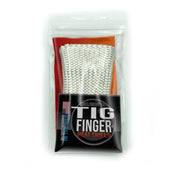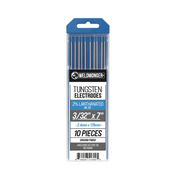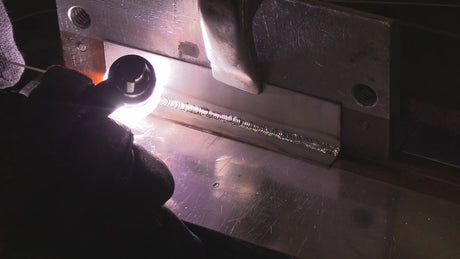Our TIG Pro Kit is like a swiss army knife and has a cup for every metal type and every situation.
From now thru October 31, 2023 you can get a free dual flowmeter when you order one of our TIG pro kits.
https://weldmongerstore.com/collections/kits
Tungsten Inert Gas (TIG) welding is an extremely versatile welding process that can be used to join almost any metal type and in various joint configurations.
The size of the TIG cup, ( sometimes called a nozzle) plays an important role in the quality of the weld and the overall welding process. Different cup sizes are needed based on the material type, joint type, and specific welding situations for several reasons:
1. Gas Coverage:
- Larger cups are often used when welding materials that require a higher level of gas coverage. Certain materials, like stainless steel, nickel alloys, and especially titanium are more susceptible to oxidation and contamination when exposed to the atmosphere during welding.
Larger cups help maintain a turbulent free and broader gas path, protecting the weld pool as well as the tungsten electrode from the atmosphere .
Another benefit to using larger cups is that it makes it less likely to contaminate the hot tip of the filler wire.
A gas lens is very helpful on any cup larger than a #8 and cups like Michael Furick’s jazzy 10, ceramic 12, MK14, and BBW have additional diffuser screens that enhance the gas flow coverage.
2. Joint Configuration:
- The type of joint being welded can influence cup size. For instance:
- Beveled groove welds on plate or pipe, require a certain size cup to reach the root of the joint. And different size cups are needed for walking the cup on pipe welds.
- Fillet welds, which are sometimes a T-joint, may only require a cup with a smaller diameter due to the fact that the joint design helps to trap the argon shielding.
3. Tungsten extension aka stickout:
- there are times when a long stickout is needed in order to reach the weld. Examples of this are welding down inside a hole, a cluster joint on a chassis, or a really tight angle gusset. The choices are to either use a really small diameter cup, to reach the weld..or to use a large cup that allows for a really long electrode extension. The furick ceramic 12 aka fupa12 allows for an extremely long stickout while still providing excellent gas coverage.
4. Welding Position:
- The welding position, whether it's flat, horizontal, vertical, or overhead, can affect the choice of cup size but usually welding position is not much of a factor for choosing TIG cup size. Metal type and joint type are much bigger factors.
5. Tungsten Electrode Size:
- The size of the tungsten electrode can also impact the choice of cup size. Imagine using a 1/8” diameter electrode with a #4 cup. The tungsten would practically take up the entire inside of the cup with only 1/16" gap for gas to flow. Smaller tungsten electrodes are often used with smaller cups for precise control, with very low argon flow rates.
6. Welder's Preference:
- Experienced welders may have personal preferences for cup size based on their experience on what works best , their personal welding style and techniques. Occasionally, the cup size might be specified on a welding procedure for coded work but for most situations, the welder makes the choice.
The selection of the TIG cup size should be based on a combination of factors, including material type, joint configuration, material thickness, welding position, tungsten electrode size, and the welder's preferences.
Having a kit like the Weldmonger® TIG pro kit lets you have a TIG cup for every situation and also helps you keep them organized.
Another benefit to a Weldmonger® TIG pro kit is being able to just put the kit in your tool bag when you need to show up on site. You never know what you will run into when called to do a job like a sanitary weld, a bracket repair, or other unknown welding job and you will know you have the right cup for the job no matter what it is.






